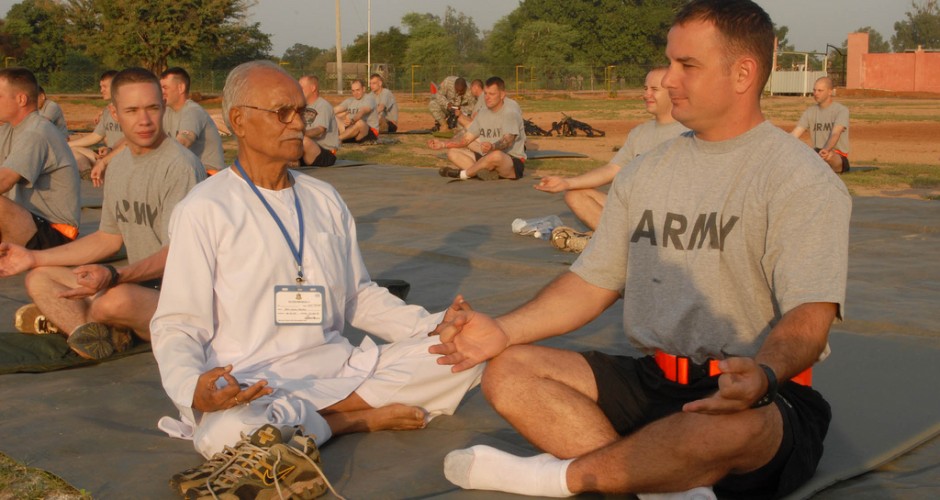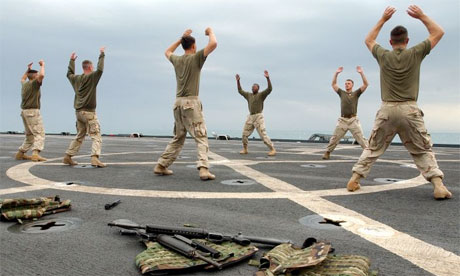
US marines doing conventional fitness training on board the USS Austin in the Gulf,
Tradoc commanders, joined by military health experts, say that traditional exercise models may make soldiers “fit” in the sense of more muscular, but often leave them too bulked up and vulnerable to injuries that yoga, which emphasises flexibility, helps prevent. And yoga’s focus on meditation and maintaining calm, they say, fits perfectly with the military’s broad new emphasis on instilling “mental toughness”, as well as physical strength, to ensure that soldiers can succeed on the modern technology-intensive battlefield pursuing elusive and nerve-wracking adversaries.
But is it ethical for peace-loving yogis to help the Pentagon fight its nasty wars? Many yoga business owners, anxious to spread the yoga “gospel” far and wide, don’t much care who gets the message – or why – as long as the market expands. Stay out of “secular” controversies, they say.

And others yogis have questioned whether yoga’s traditional “do no harm” principle really means “don’t go to war” – or rather, “war if you must, but do it with restraint.” They point out that prior to Gandhi, who largely blessed yoga as a spiritual practice of “non-violence”, Indian leaders in ancient times used it much as the Pentagon wants to today – as a way of preparing mentally for battle.
Naturally, some aspects of the growing yoga-military connection are more controversial than others. At the Walter Reed Medical Centre Washington, DC, a group of yogis has pioneered the application of an esoteric yoga practice known as “yoga nidra” – literally, “sleep yoga” – which new research shows can measurably reduce the effects of PTSD on returning war veterans. The nidra practice actually differs from most other types of contemporary yoga because it doesn’t rely on physically challenging yoga “asanas” or poses to strengthen the body, but depends instead on meditation and relaxation techniques, with participants lying motionless on their backs.
Robin Carnes, a former corporate publicist who helped pioneer the yoga-military-PTSD connection, has even established a teacher-training programme for aspiring military yogis through her organisation, Warriors at Ease, which may soon become one the first officially recognised “yoga defence contractors”. Carnes, together with a Harvard-trained professor, Richard Miller, conducted one of the first formal studies that measured the effects of yoga nidra on soldiers who had been scarred mentally and emotionally by their wartime service, and military planners came away impressed with the results.
But not all yogis have agreed to restrict their yoga training to healing practices. A big stir was created in the yoga world in 2006 when it was revealed that US Navy Seals and other US military units were getting trained in yoga, because they saw its application to Seal operations where stealth and calm could make the difference between life and death. Some Seals went on to pioneer yoga hybrids like “combat yoga” or “warrior yoga”, and even set up their own yoga schools, blending the yoga training with martial arts, and special Seal combat techniques.
Developments like these have left many peace-loving yogis aghast. But after a decade of exponential growth – an estimated 1 in 10 adults now practises yoga regularly – the $6bn yoga industry still has no widely-accepted training guidelines, to say nothing of licensing programmes, to guide the estimated 70,000 yoga teachers in the US as they navigate the burgeoning yoga market, with all its temptations and possible pitfalls.
“The few, the proud, the brave,” say the Marines. For some, it’s a marriage made in Nirvana.
Every 80 minutes a U-S veteran commits suicide. Every single day an active duty soldier takes his/her own life.Yoga Across America’s initiative, “Yoga for American Soldiers,” is saving lives and healing the wounds our soldiers are returning home with from war. YAA is sharing yoga, meditation and breathing exercises to active duty soldiers and veterans. We are reaching out to all branches of the military, teaching yoga to hundreds of troops.
In India with Indian Army
Capt. Dan Digati, commander, Troop B, 2nd Squadron, 14th Cavalry Regiment, “Strykehorse,” 2nd Stryker Brigade Combat Team, 25th Infantry Division takes breathing advice from Ram Dhani Bajpai, yoga instructor, during a yoga session at Camp Bundela in Babina, India,
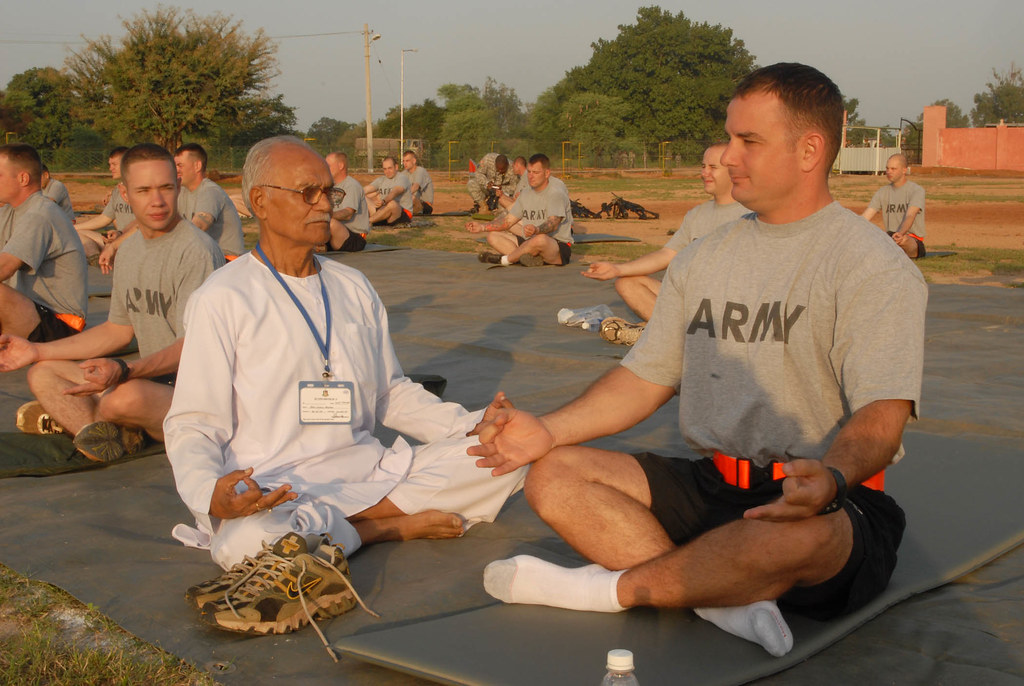
Soldiers assigned to Troop B, 2nd Squadron, 14th Cavalry Regiment, “Strykehorse,” 2nd Stryker Brigade Combat Team, 25th Infantry Division listen to a yoga instructor during their yoga session at Camp Bundela in Babina, India, Oct. 11. The instruction is part of a cultural exchange between the Indian Army and the U.S. Army.
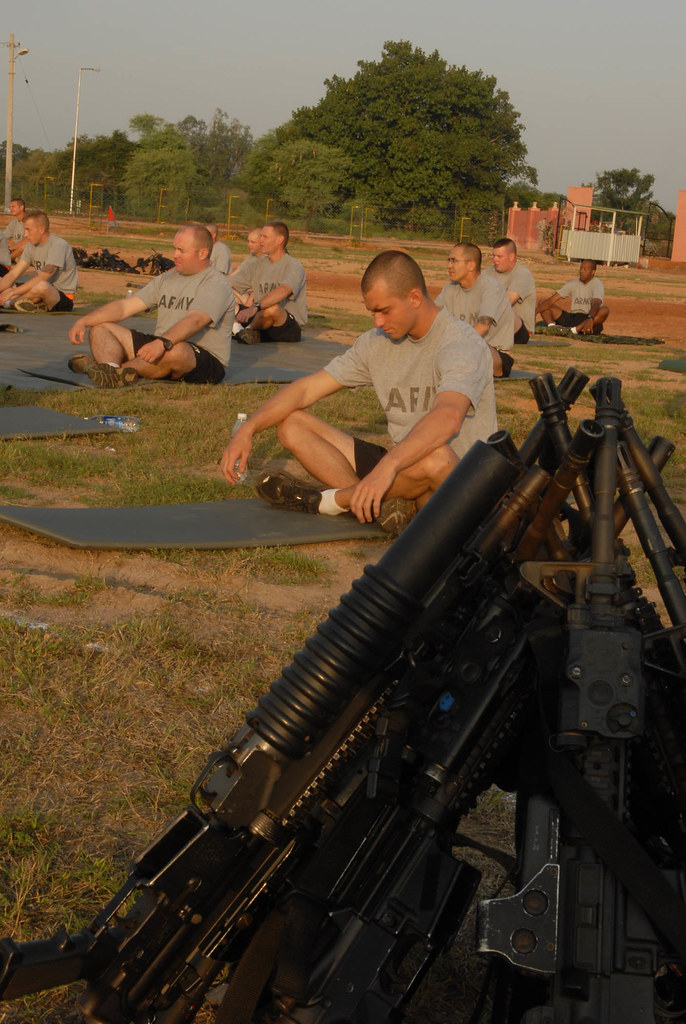
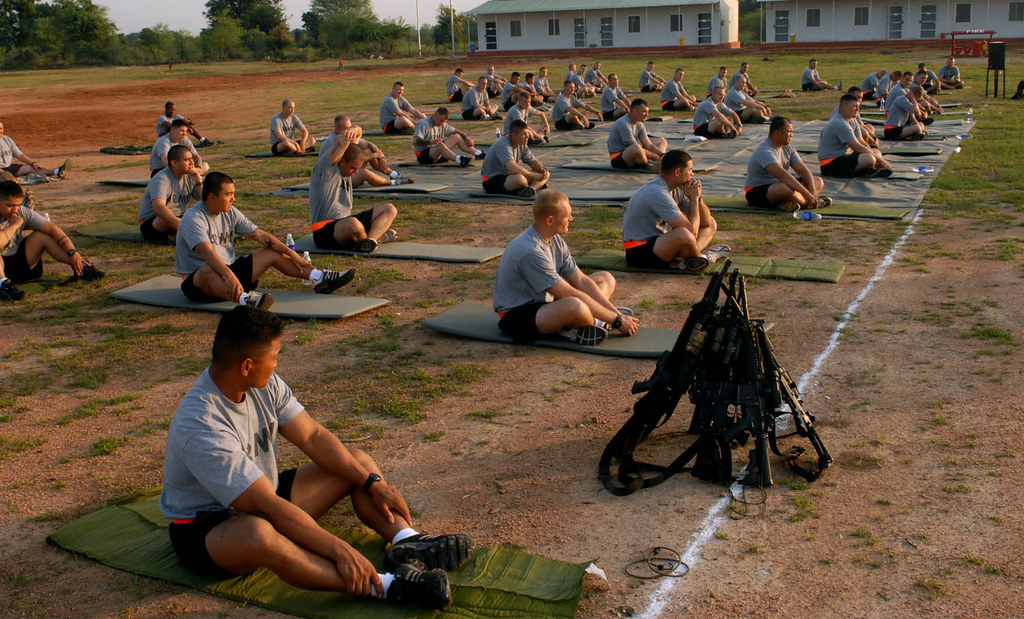
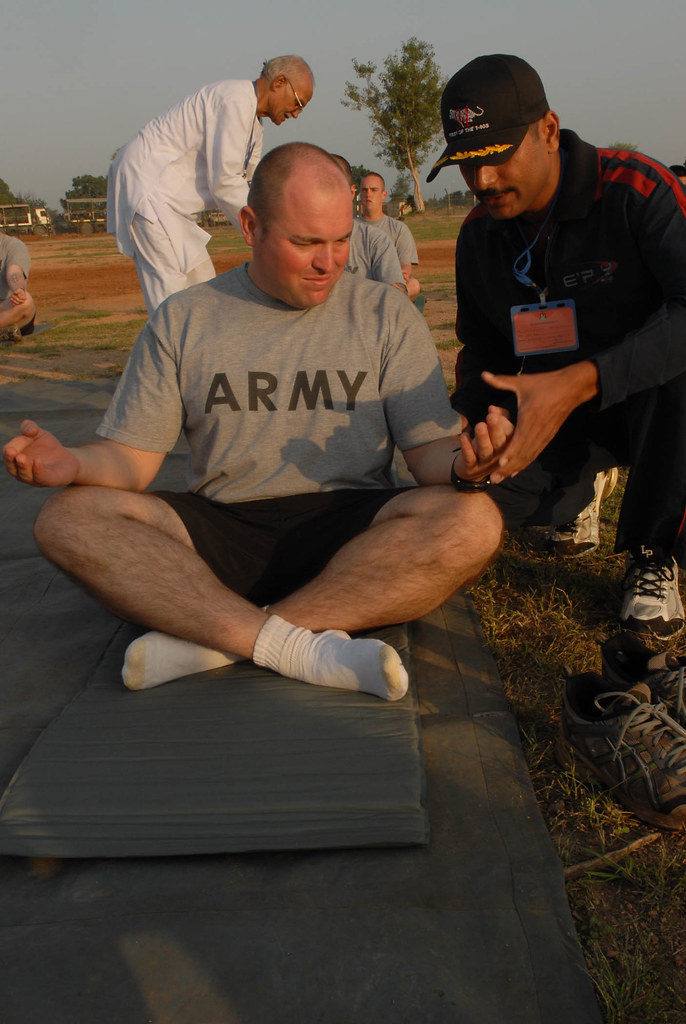
Ram Dhani Bajpai, yoga instructor, leads Soldiers assigned to Troop B, 2nd Squadron, 14th Cavalry Regiment, “Strykehorse,” 2nd Stryker Brigade Combat Team, 25th Infantry Division listen through pranayama, or breath control, exercises during their yoga session at Camp Bundela in Babina, India,
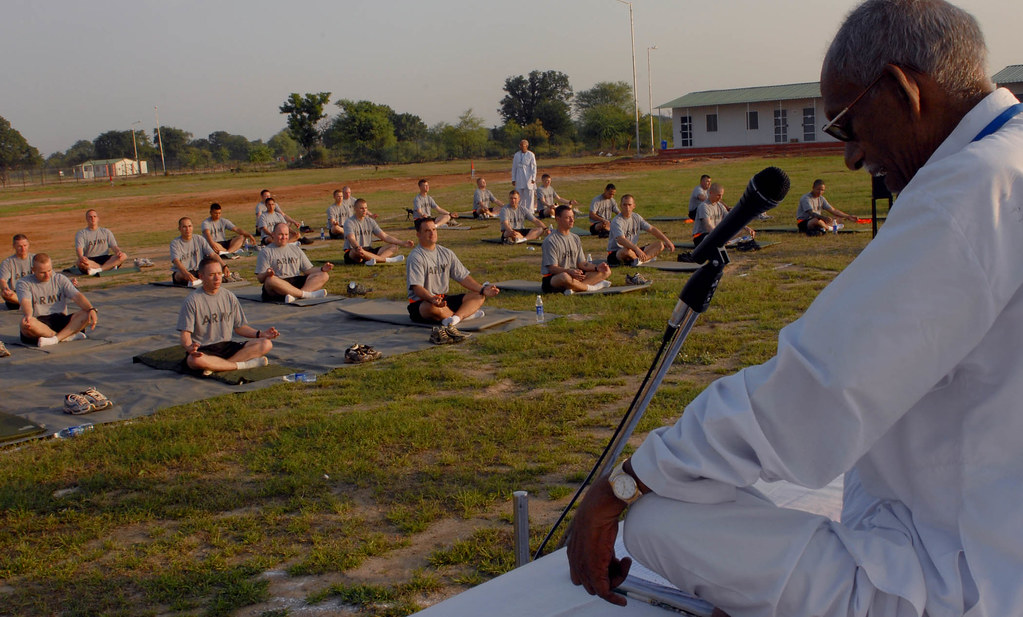
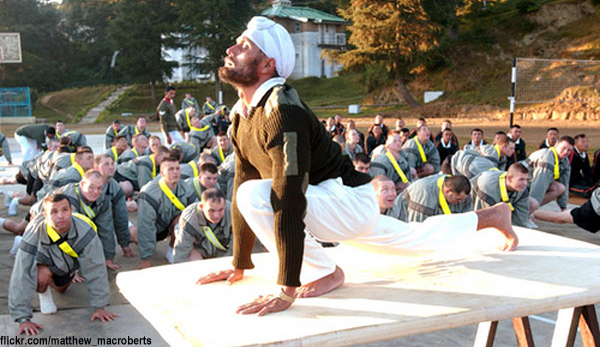
Sgt. Gurdev Singh, a Indian Army master physical fitness instructor, leads Soldiers from C Company, 3rd Battalion, 21st Infantry Regiment, in a Yoga exercise during morning fitness training. C Company is in India participating in Exercise Yudh Abhyas
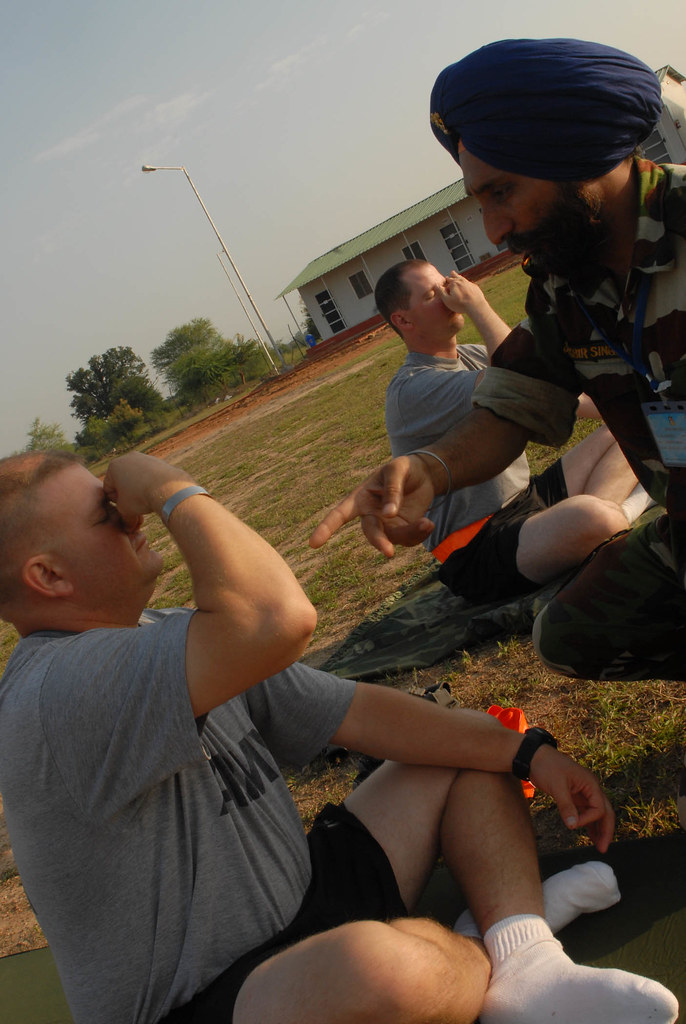
Sgt. 1st Class William Dressel, platoon sergeant, Troop B, 2nd Squadron, 14th Cavalry Regiment, “Strykehorse,” 2nd Stryker
Brigade Combat Team, 25th Infantry Division takes breathing advice from Indian Army Naib Subedar Jasbir Singh during a yoga session at Camp Bundela in Babina, India
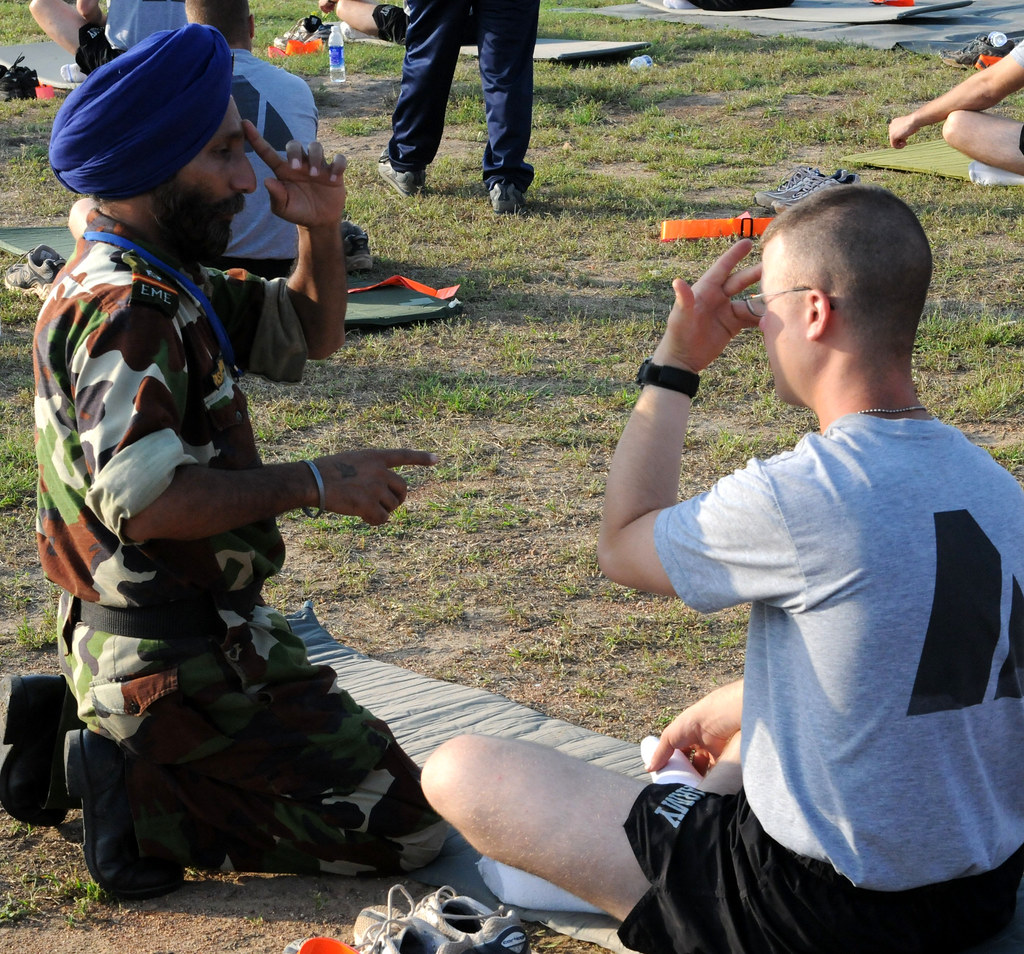
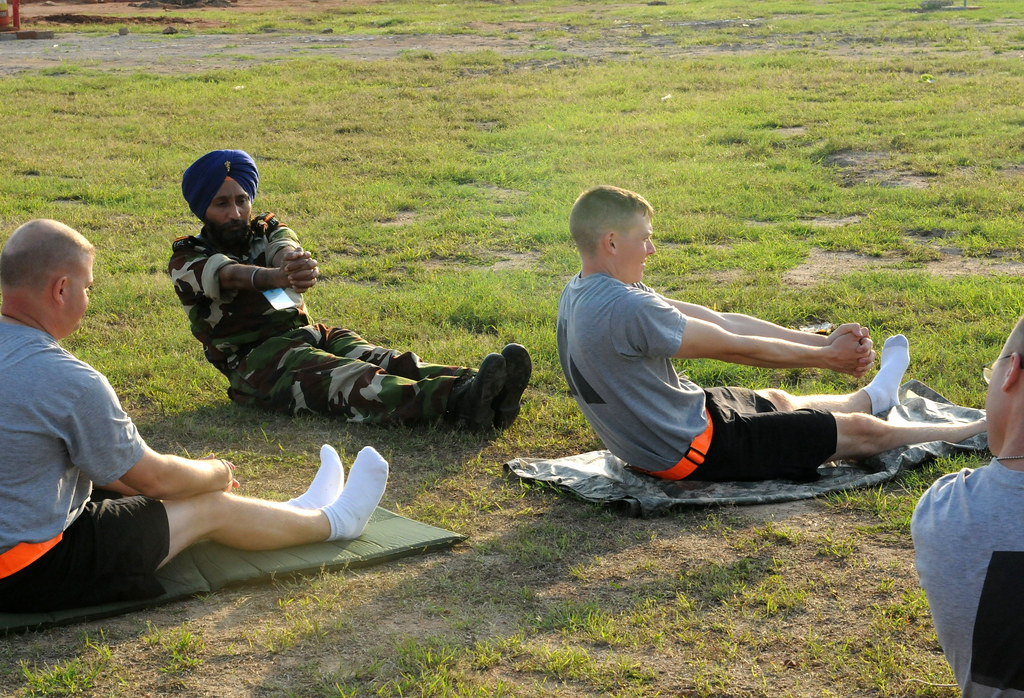
Indian army Junior Commissioned Officer Jasbir Singh, electronic mechanical engineer, 73rd Armor workshop practices a rotational yoga technique with Soldiers from Bravo Troop, 2nd squadron, 14th Cavalry Regiment, “Strykehorse,” 2nd Stryker Brigade Combat Team, 25th Infantry Division, during Exercise Yudh Abhyas in Babina Indi

